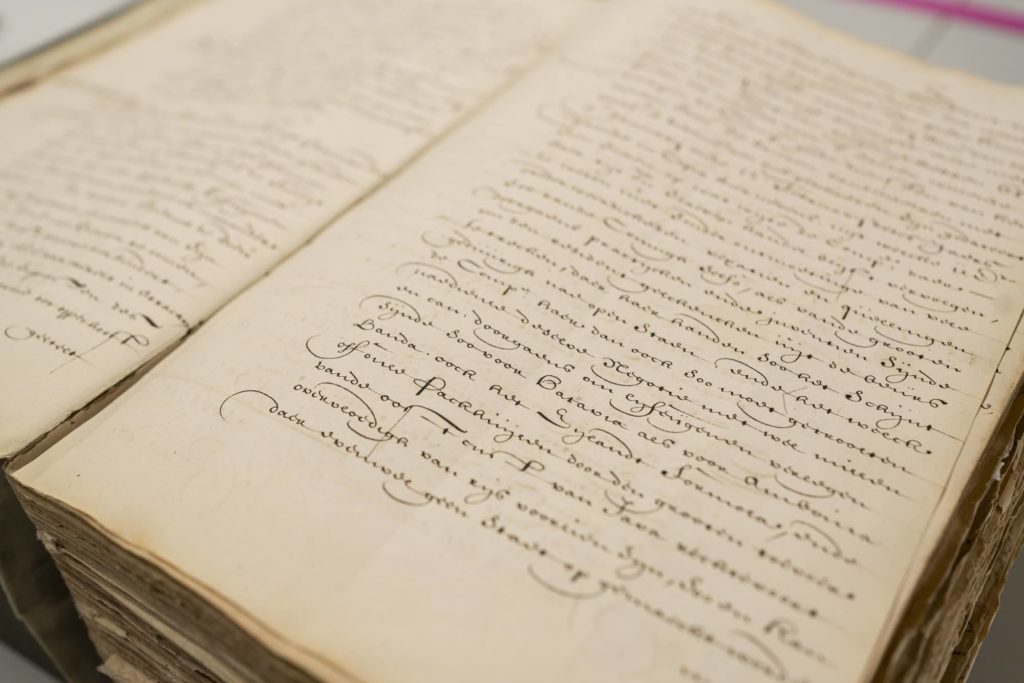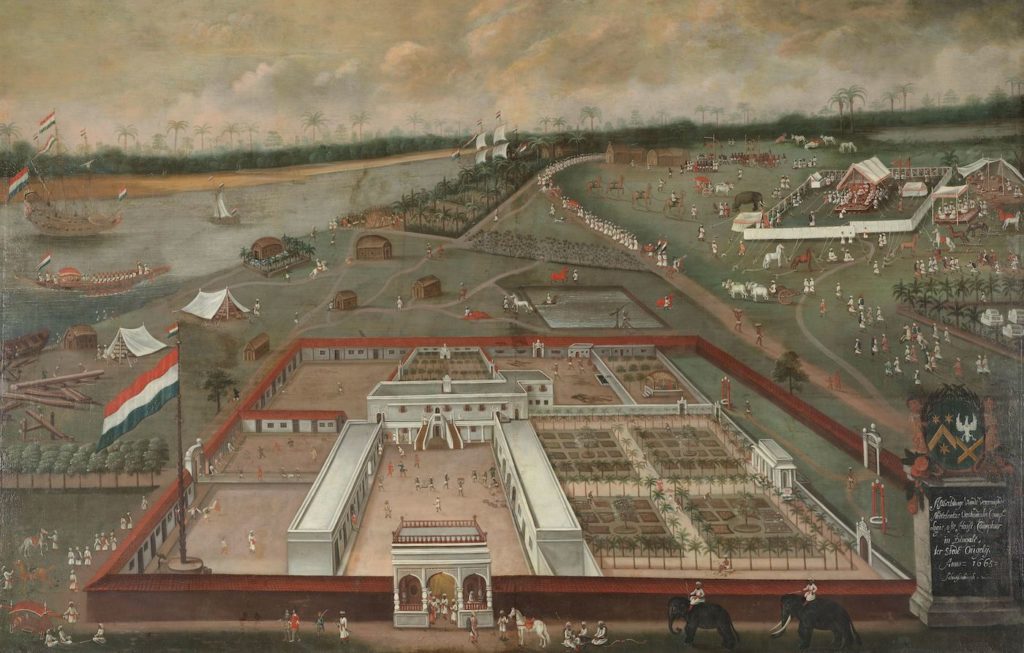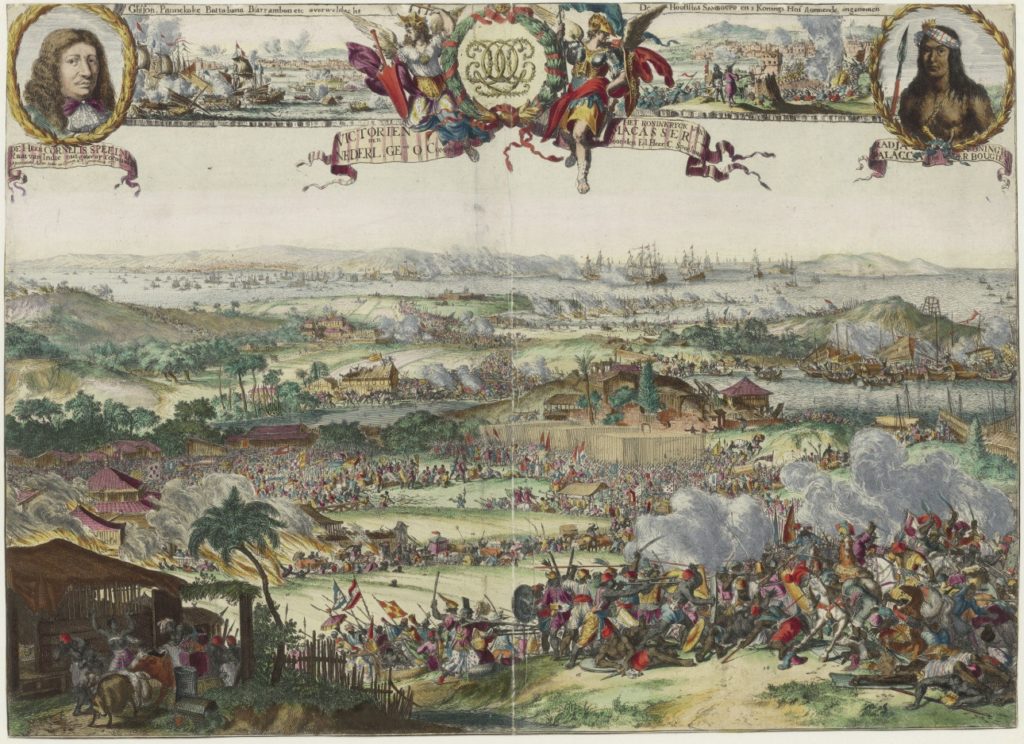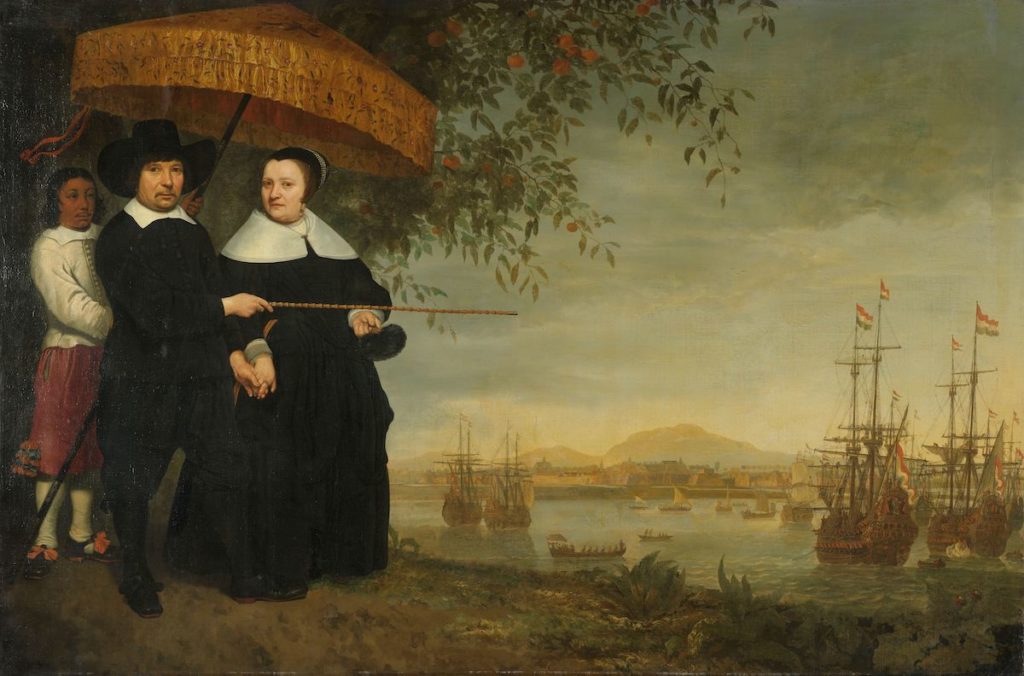GLOBALISE unlocks the so-called Overgekomen Brieven en Papieren (Letters and papers received, OBP), the key series of VOC documents and reports that were sent over from the company’s Asian headquarters in Batavia (now Jakarta in Indonesia) to the Dutch Republic in the seventeenth and eighteenth centuries. This series of more than 5 million handwritten pages is of crucial importance to our understanding of the history of the world. It provides detailed and structured overviews of historical events and social, political, and economic developments occurring in the vast region where the VOC was active.
This region stretched from modern-day Yemen to Japan, encompassing the Indonesian archipelago, Sri Lanka, the coasts of India, Bangladesh and Myanmar, the island of Taiwan, and various Chinese cities. The documents also provide information on Madagascar, scattered regions on the east coast of Africa, and the area around Cape Town. Covering almost the entire seventeenth and eighteenth centuries, the OBP form the most complete and extensive body of sources on early modern world history. For some regions, the documents in this archival series are among the earliest written historical sources.

Photo Dave Straatmeyer
The documents and reports provide information on a wide range of subjects. Trade features most prominently. On the first picture below (click images for large versions), Dutch vessels are visible on the river Ganges at Hugli, just north of Kolkata. But there is much more going on in this picture. On the right, a local official set up camp, probably to negotiate with representatives of the VOC. This is also reported on in the OBP, as are the local plants and animals, and the religious ceremony at the back. Other topics covered by the VOC reports are the vicious wars waged by the company in name of the Dutch Republic, such as the conquest of Macassar on the Indonesian island of Sulawesi in 1667, depicted on the second picture below, and the as yet under-researched topic of slavery in Asia (third picture).

The trading post of the Dutch East India Company in Hugli, Bengal.
Painting by Hendrik van Schuylenburgh, 1665.
Rijksmuseum Amsterdam, license CC0.

The conquest of Macassar in 1667 by Cornelis Speelman.
Engraving by Johannes Vingboons.
Dutch National Archives, The Hague, license CC0.

A senior merchant of the VOC with his wife and an enslaved servant.
Painting made in circle of Aelbert Cuyp, c.1650-c.1655.
Rijksmuseum Amsterdam, license CC0.
The importance of the OBP has long been recognised, and much effort has been made to make this source better accessible for researchers. Between 1960 and 2017, the Huygens Institute and its predecessors published annotated selections of the General Letters, a collection of summarising reports within the OBP (link to online version). Even though the series consists of 14 hefty book volumes, it covers only about one-sixth of the available material. To improve the accessibility of the original documents, the project ‘Towards a New Age of Partnership’ (TANAP) compiled a database with short descriptions of documents in VOC archives held in various places around the world. Also, sections of the OBP have been translated to make them available for non-Dutch researchers. Cheng Shaogang for example translated sections related to the history of Taiwan into Chinese.
Technological advancements now make it possible to go much further in unlocking this source. The Dutch National Archives have made high-quality scans of almost their entire VOC archives (scans are accessible through the online inventory, the part of the OBP sent to the Amsterdam chamber of the VOC can be found in the inventory number range 1053-4454; documents and reports sent to the Zeeland chamber in the range 7527-11024). We have automatically transcribed the almost 5 million scans of the OBP using the open-source Loghi software. A first version of the transcriptions can be searched and explored in a prototype transcriptions viewer in our GLOBALISE Lab.
